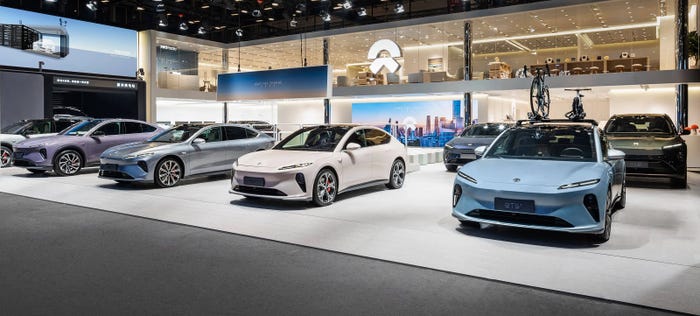Sellers’ Market Screeches to a Halt
Affordability will improve, but gradually, predict Cox analysts.
January 10, 2024

The 2024 auto market will not be as topsy-turvy as the past few years, say Cox Automotive analysts. It will grow, but not by much. For dealers, 2024 will mark the end of the sellers’ market, they say during an Industry Insights 2024 Webcast.
“We’ve been through the good and the bad times, and now we will see sales rise gently as (interest) rates fall,” Cox Automotive chief economist Jonathan Smoke says during the recent webcast. “We officially bid farewell to the sellers’ market.”
Cox forecasts 1% to 2% percent annual growth in 2024.
While it may not be great, “it beats recession,” says Smoke.
A weaker or “less hot” labor market underlies some of that slow growth. But inflation will continue to moderate, and income growth will likely continue to exceed inflation in 2024, he says, meaning consumers will be better off.
The Federal Reserve should begin to cut interest rates in second-half 2024, says Smoke. That will trickle down to consumer loan rates.
“We expect consumer points to fall less than a percentage point, but affordability will improve, albeit gradually,” he says.
Return of Discounting
In 2023, 15.46 million new light vehicles were sold in the U.S. market, says Cox Automotive senior economist Charlie Chesbrough.
Volatility moderated in 2023, he says, and Cox expects the recovery to continue, with total sales reaching 15.7 million in 2024. That may be optimistic, he cautions, because “headwinds remain in the market.”
Fleet sales are one uncertain variable. With 2023 sales of 2.8 million units, they accounted for much of the sales gain, says Chesbrough. That was due to pent-up rental and commercial demand. Rental fleet sales, for example, rose nearly 60% annually.
But that isn’t sustainable, he says. “While fleet demand is likely to remain strong, future growth will remain muted as fleet demand has been satiated,” says Chesbrough. Cox forecasts 3.0 million fleet sales in 2024.
Product availability improved in 2023 and inventory levels ended the year up 51% compared to 2022. Days’ supply at end-2023 was at 71, up 21% year-on-year. That’s good for consumers, but it is not great news for dealers, says Chesbrough. “(Dealer) profits reached their peak when supply was most limited,” he says.
While overall supply improved, the situation was quite varied among brands, says Chesbrough. The leaders in lowest days’ supply were Toyota with around 36 and Honda around 43. At the opposite end of the spectrum, Ram and Ford each had close to 100 days’ supply.
For consumers, that means discounting is returning, especially at brands with rising inventories. “As supply grew, discounting rose throughout (2023),” says Chesbrough.
The price as a share of MSRP finished the year close to 98% compared to 100% or more in January. “The sellers’ market has faded,” he says.
Chesbrough expects more cash on the hood offers in 2024, especially in the pickup segment. He also expects more incentives in the EV segment, especially leasing.
The Year of the EV
Despite stories of slowing EV sales, Stephane Valdez Streaty, Cox Automotive’s director of industry insights, declares 2023 to be “the year of the EV.” EVs represented 8% of all new sales in 2023, and the segment grew 46% year-over-year to total sales of 1.1 million units, she says.
In 2024, Cox expects EV sales to rise to close to 9% of the market, helped by a wave of new model launches. That includes 37 new models in 2024 and 34 in 2025.
Those sales won’t be evenly distributed among states, however, says Streaty. Some 60% of new EV sales are in states with high rates of EV adoption. Consumers still aren’t convinced they should buy an EV due to charging access concerns and high prices; the average price for an EV in December was $50,798, says Streaty. Internal-combustion-engine vehicles had an average transaction price of $48,759 at end-December.
But the average price between EVs and ICE vehicles is narrowing, she says, and “we should see continued movement in the closing of the gap.”
Meanwhile, leasing of EVs is growing in popularity, up 159% from January though December, says Streaty. The federal tax credit for EVs applying to any leased EV has boosted EV leasing, she says. It applies to only 14 EVs if purchased. “For consumers, leasing is a great option,” says Streaty.
Those leased EVs will provide ample fuel for the wholesale market in three years, but EVs accounted for only 1.6% of total Manheim auction volume in fourth-quarter 2024, says Jeremy Robb, Cox Automotive’s senior director, economic and industry insights.
“It is going to take a few years for supply to build in the used EV market,” he says.
Supply in the overall wholesale market was tight in 2023 and will remain so in 2024, says Robb. Cox expects total wholesale market volume to increase only 1% to 10.4 million units in 2024, he says. Dealers will remain the largest source of wholesale inventory, contributing 6.7 million units in 2024, reports Cox.
The used retail market should also remain “somewhat constrained from a supply level,” says Robb. Despite limited supply, retail used prices were down 4% at the end of 2023 compared to the same time in 2022, according to Cox.
About the Author(s)
You May Also Like



